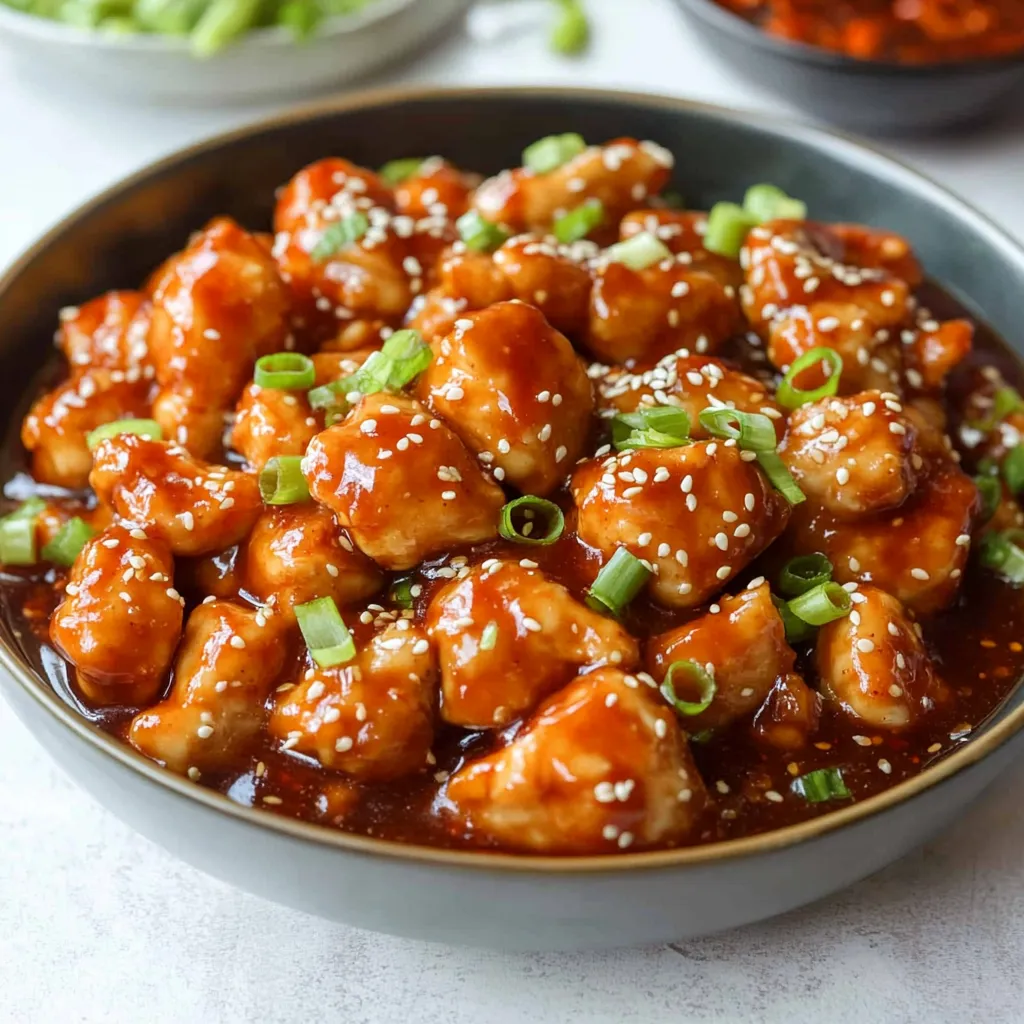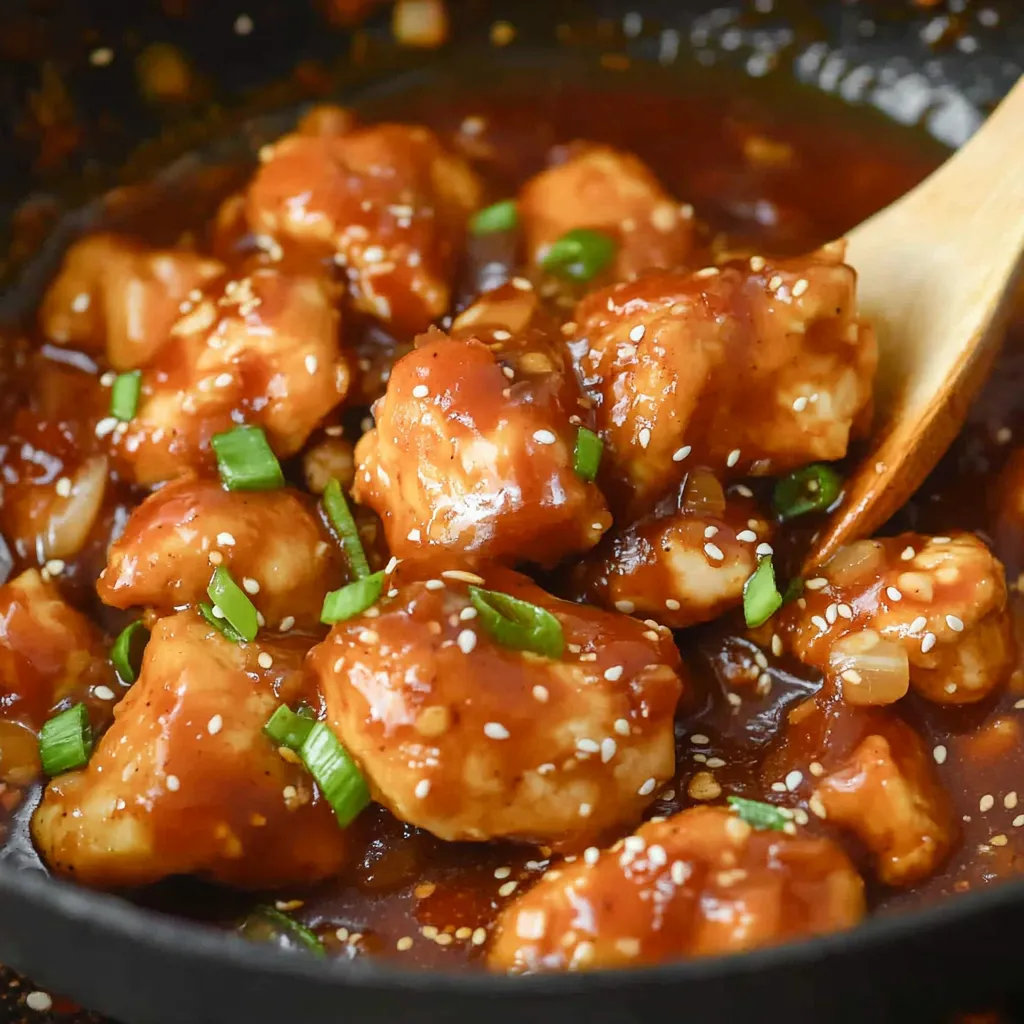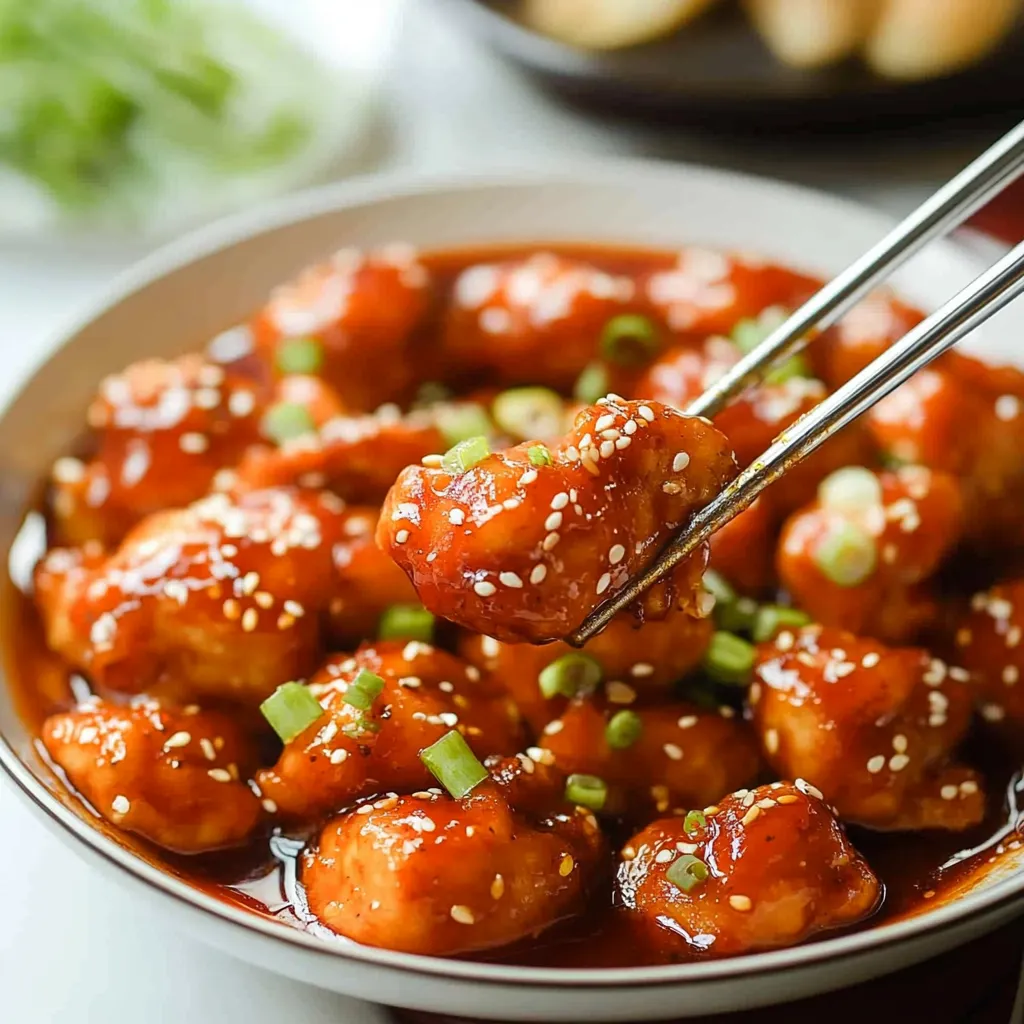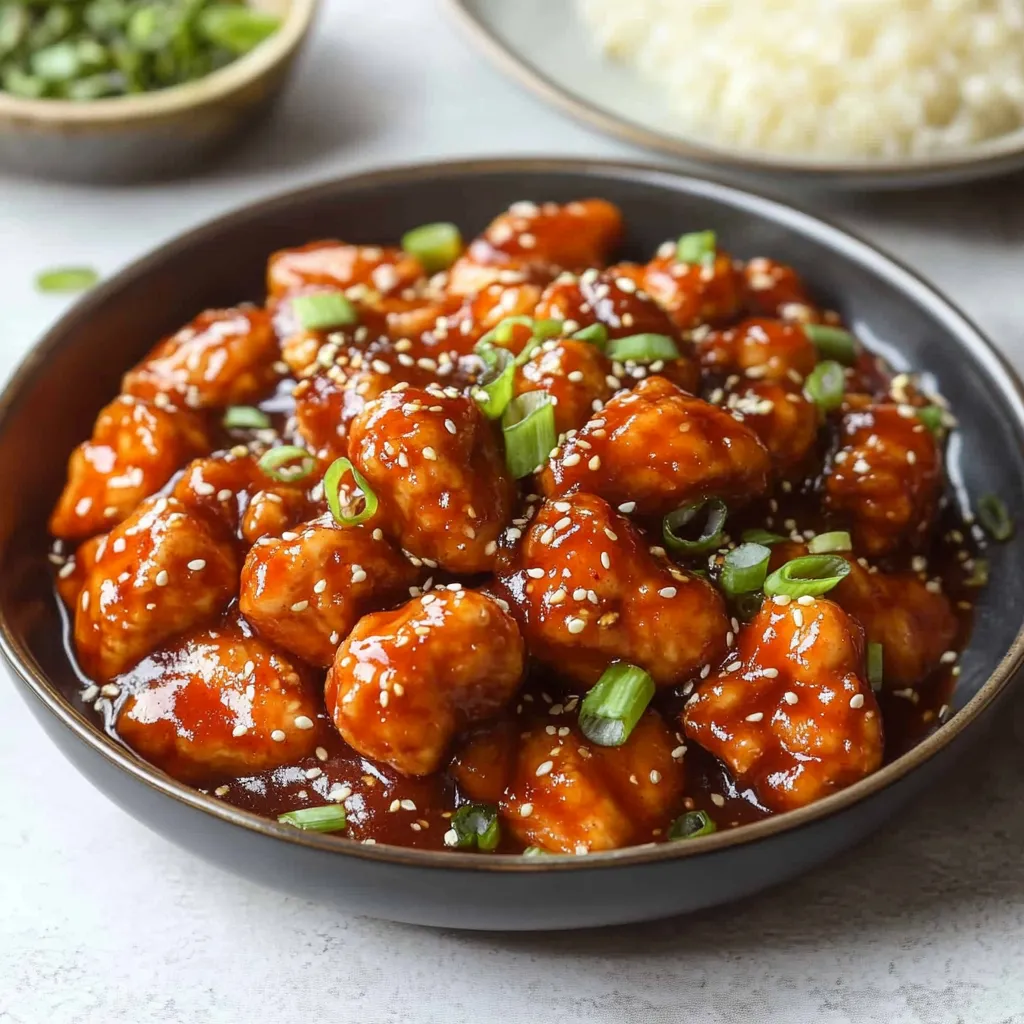 Pin it
Pin it
Imagine perfectly crispy chicken pieces coated in a glossy, vibrant red sauce that's sweet, spicy, and deeply savory all at once. This Gochujang Chicken recipe transforms humble chicken thighs into an exciting dish that captures the essence of Korean cuisine. Each piece of chicken stays crispy even when coated in the rich, flavorful sauce, creating a perfect balance of textures and tastes.
When I first experimented with gochujang in my kitchen, I was amazed by how this single ingredient could add such complexity to a dish. My family, initially hesitant about spicy food, now requests this chicken weekly. The secret lies in getting that perfect crispy coating and balancing the heat of the gochujang with just the right amount of sweetness.
Essential Ingredients
- Boneless chicken thighs: Select fresh, high quality thighs that feel firm and have a uniform pink color. Dark meat is essential here as it stays juicier during the high heat cooking process and provides richer flavor. Each thigh should be well trimmed of excess fat but maintain enough for flavor and moisture.
- Gochujang paste: This fermented Korean chili paste is the foundation of our sauce. Look for a deep red color and thick, glossy consistency. Different brands offer varying heat levels from mild to extremely spicy. For beginners, start with a mild or medium variety. The paste should have a complex aroma with notes of fermented soybeans and chilies.
- Cornstarch: Using fresh, lump free cornstarch is crucial for achieving that perfect crispy coating. It creates a thin, crispy shell that stays crunchy even after being coated in sauce. The starch should be fine and powdery, without any moisture or clumps.
- Neutral cooking oil: Choose a high smoke point oil like avocado, grapeseed, or vegetable oil. The oil should be fresh and completely odorless to let the chicken and sauce flavors shine. You'll need enough to create a 1/4 inch layer in your pan.
- High quality soy sauce: Traditional brewed soy sauce adds essential umami depth. Look for naturally brewed soy sauce with a rich amber color and complex aroma. The sauce should taste balanced between salty and savory, not just salty.
- Local honey: Raw, unfiltered honey provides the best flavor and helps create a glossy finish on the sauce. The honey's natural floral notes complement the spicy gochujang while providing necessary sweetness to balance the heat.
Additional Aromatics and Seasonings
- Fresh garlic cloves: Choose firm, heavy heads with tight, unblemished cloves. Fresh garlic provides sharp, aromatic notes that dried alternatives can't match.
- Green onions: Look for bright, crisp stalks with vibrant green tops. These provide both flavor and visual appeal, adding a fresh, oniony bite and beautiful color contrast.
- Toasted sesame oil: This finishing oil should be dark amber in color with an intensely nutty aroma. A little goes a long way in adding authentic Korean flavor.
Instructions Steps
- Mastering the Chicken Preparation
- Begin with room temperature chicken thighs cold meat won't coat or cook evenly. Cut each thigh into uniform 1.5 inch pieces, ensuring consistent size for even cooking. Unlike many recipes, DO NOT pat the chicken dry the natural moisture helps the cornstarch create a better coating. Examine each piece carefully, trimming any remaining fat pockets while leaving enough for flavor.
- Creating the Perfect Coating
- Measure your cornstarch precisely too much creates a gummy coating, too little won't crisp properly. Sprinkle the cornstarch evenly over the chicken pieces, then use your hands to gently massage it in, ensuring each piece is evenly coated. The coating should feel like a thin, even layer rather than clumpy or dusty. Let the coated chicken rest for 5 minutes to allow the starch to properly adhere.
- The Art of Frying
- Heat your oil to exactly 350°F (176°C) this temperature is crucial for achieving that golden brown exterior while keeping the interior juicy. A good test: a small piece of coating should sizzle immediately but not burn. Work in small batches overcrowding is the enemy of crispiness. Each piece should have enough space to form a proper crust. Fry for 5 6 minutes per side until deeply golden, adjusting heat as needed to maintain temperature.
- Crafting the Signature Sauce
- While the chicken fries, combine your sauce ingredients: Mix gochujang paste with soy sauce first to thin it out, then add honey and minced garlic. The consistency should be smooth and slightly thickened. Heat a separate pan and sauté finely diced onions until translucent they'll help build the sauce's foundation. Add your gochujang mixture and simmer until it thickens slightly and becomes glossy.
 Pin it
Pin it
The Key of Perfect Sauce Consistency
Watch for visual cues in your sauce it should coat the back of a spoon and slowly drip off, leaving a clear line when you run your finger through it. This consistency ensures it will cling to the chicken without making it soggy.
My journey with gochujang cooking started in a tiny apartment kitchen, experimenting with different heat levels and sauce combinations. I've found that medium spicy gochujang creates the most balanced flavor profile, allowing everyone at the table to enjoy the dish. The way the sauce caramelizes slightly on the crispy chicken brings back memories of street food vendors in Seoul.
Serving Presentation Mastery
Layer your dish carefully start with a bed of steamed rice, arrange the glazed chicken pieces artfully on top, and garnish with a deliberate scatter of sliced green onions and toasted sesame seeds. The visual appeal enhances the eating experience.
 Pin it
Pin it
Temperature and Texture Control
The success of this dish lies in timing. Keep your first batches of fried chicken warm in a 200°F (93°C) oven while completing the rest. This maintains crispiness without overcooking. When adding the sauce, work quickly to coat each piece evenly while the sauce is hot and fluid.
Storage Wisdom
Store leftover chicken and sauce separately in airtight containers. Reheat the chicken on a wire rack in a 350°F (175°C) oven until hot and crispy, then toss with reheated sauce. Never microwave it destroys the carefully crafted texture.
 Pin it
Pin it
Frequently Asked Questions
- → What is gochujang?
- Gochujang is a Korean red chili paste that's sweet, savory, and spicy. You can find it in Asian grocery stores or many supermarkets.
- → Can I make this less spicy?
- Yes, simply reduce the amount of gochujang and balance with a bit more sugar to maintain the flavor balance.
- → What can I serve this with?
- This pairs perfectly with steamed rice and vegetables, or can be part of a Korean-style meal with kimchi and other sides.
- → Can I use chicken breast instead of thighs?
- Yes, chicken breast works well too, just be careful not to overcook it as it can dry out more quickly than thighs.
- → How long does this keep?
- Store in an airtight container in the refrigerator for up to 3 days. Reheat in a pan to maintain crispiness.
